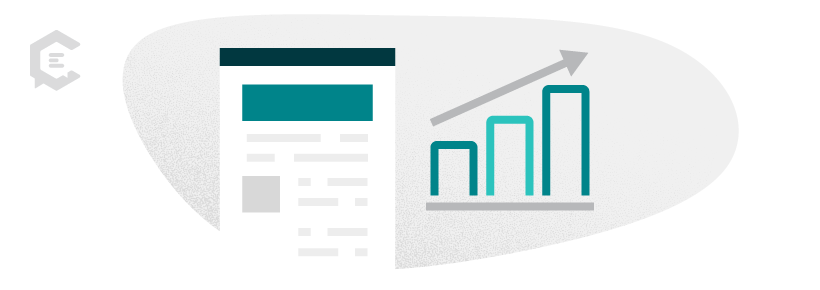We’ll just come out and say it: Finance isn’t exactly the most thrilling topic for most. That’s why it’s crucial to approach it in a way that really grabs your audience’s attention, helping them connect with your business and see how your solutions can benefit them.
To help with that, we’ve pulled together some top content marketing strategies specifically for the finance sector, with a focus on open banking and embedded finance. Let’s dive in!
 Open Banking and Embedded Finance — Why It Matters
Open Banking and Embedded Finance — Why It Matters
Regulations, technology innovations, and shifting consumer expectations have changed how consumer finance works over the past years.
According to a recent report by Juniper Research, the value of global embedded finance transactions is expected to increase by 134 percent to $2.5 trillion by 2028, up from $1.1 trillion in 2024, highlighting the rapid growth and increasing importance of embedded finance in the financial industry.
Banks and insurance companies, once unchallenged, are now facing stiff competition from startups, established tech giants like Google and Apple, and even big retailers. These new players are responding to the demand for a more customer-centric, transparent, and integrated financial experience that fits seamlessly into consumers’ daily lives.
Open Banking
One of the driving forces behind this shift is something called open banking. This approach allows tech companies and retailers to offer financial services by using a range of services and software interfaces that let third-party financial service providers access consumer banking data, with customer consent, of course.
For example, a consumer lending app could use open banking APIs to pull transaction data directly from a customer’s bank account. This gives the app a clear picture of spending habits and can offer new insights into the customer’s creditworthiness.
Embedded Finance
Building on open banking, embedded finance takes things a step further. It integrates financial services — like payments, loans, and insurance — directly into non-financial platforms, such as e-commerce sites.
For instance, Shopify merchants can offer loans or installment payment options right from their Shopify dashboard. Customers don’t have to go through a bank; they can access these financial services through the platforms they’re already using.
Embedded finance creates new opportunities for brands to go beyond their core offerings, making their products more engaging and useful for customers. Plus, it gives businesses a chance to earn additional income by bundling financial services with their main products.
Content Marketing for Educating Your Clients: Open Banking and Embedded Finance
Unfortunately, some of the benefits and technical aspects of open banking and embedded finance are difficult to communicate effectively. These are complex topics, and getting your audience to understand them can be tricky.
By educating your customers about your open banking and embedded finance services and related trends, content marketing can help you guide your audiences through ongoing industry changes and outline the benefits of your firm’s solutions. Here are a few ways to do that:
- Glossaries and Definitions: Finance writers should make key terms easy to understand with accessible references. Pro tip: Use hover-over tooltips to define terms without interrupting the reading flow.
- Interviews with Experts: Humanize complex topics by using a Q&A format. Pair technical experts with end-users to show real-world impact.
- Thought Leadership on Market Trends: Share your insights on the latest industry trends and offer predictions on what’s next. Example: “We expect to see an X% increase in API-driven banking solutions in the next Y months.”
- Customer Success Stories: Show the real-world impact of your solutions with case studies. Highlight the “before and after” in a visual, easy-to-digest way.
- Behind-the-Scenes Content: Give your audience an inside look at your processes with a “Day in the Life” video series featuring team members involved in product development.
- Topic Primers and Reports: Share exclusive insights and in-depth reports. Make your data-driven content stand out by offering tiered access, like free executive summaries with full reports available for lead generation.
- Compliance and Security Content: Be transparent about data protection and evolving regulations. You might engage your audience with a “Security Health Check” tool, helping them assess their own practices while staying informed.
Creating Engaging Content for Key Audiences
Beyond educating, content should also try to engage stakeholders other than clients, for example, industry representatives, end-users, and suppliers:
- Consumers (end-users): Showcase how adopting innovative financial services benefits them by addressing pain points around transparency, convenience, and access. Emphasize how open banking and embedded services improve financial well-being.
- Developers: Underline how your technical infrastructure works through comprehensive API guides, documentation, and integration resources. Highlight opportunities to create value-added services and shape their future in finance.
- Partners: Highlight the benefits of integrating financial services into their existing products and offer co-marketing strategies to enhance service offerings. This will help expand your reach and educate further on your service offerings.
- Investors: Educate them about growth and innovation in the sector by showcasing market trends, competitive landscape, and long-term industry vision. Emphasize the transformative potential and financial opportunities in open finance.
- Policymakers: Position your company as a thought leader in regulatory discussions by providing balanced perspectives on innovation and consumer protection.
Driving Engagement Through Thought Leadership
Positioning the institution as an expert and thought leader on industry trends also fosters engagement across stakeholders. Tactics include:
Industry Events and Speaking Opportunities
Establish credibility and expand reach to niche audiences through high-profile conferences and panel discussions. Secure podcast interviews with industry influencers. Host webinars on emerging trends and technologies. These tactics can assist in increasing your brand visibility and position the institution as a go-to expert.
Proactive Media Engagement
Shape industry narratives and build relationships with key media outlets. Provide timely commentary on breaking news and pitch exclusive stories to relevant journalists. Offer media training to ensure consistent messaging from spokespeople to enhance your reputation as a reliable and insightful source.
Guest Contributions and Byline Articles
Demonstrate deep expertise through authored articles in respected trade publications. Develop a content calendar aligned with industry trends. Include actionable insights and calls to action in each piece to establish your institution as a valuable contributor to industry discourse.
Surveys and Primary Research
Provide unique, data-backed insights through regular surveys on emerging trends and pain points. Produce comprehensive reports with actionable findings. Create visually appealing infographics for easy consumption to position your firm as a source of exclusive, valuable industry intelligence.
Best Practices for Content Marketing in the Open Banking and Embedded Finance Landscape
To maximize impact as the industry transforms, you can incorporate the following best practices in your open banking and embedded finance content strategies.
Aligning Content with Business Goals
Content efforts should ultimately support your core business objectives. Goals may include:
- Increase API adoption among developers.
- Attract fintech partners.
- Drive app downloads.
- Boost brand awareness.
- Grow consumer trust and loyalty.
Begin by defining key goals and KPIs. Then, map content types and topics to see how they help achieve those aims. This ensures content reinforces strategic priorities.
Measuring the Success of Your Content Marketing
Robust analytics are essential to demonstrate content impact and fine-tune approaches. Key metrics to track include:
- Consumption metrics: Volume of content views, downloads, shares, and subscribers over time shows engagement levels.
- Lead generation: Form fills, demo requests, and profile creations indicate how content converts readers.
- SEO value: Higher rankings for target keywords and traffic from organic search reflect content discoverability.
- Conversion to sales: Track sales cycle stages, account sign-ups, or purchases linked to content.
- Audience insights: Web analytics and surveys provide data on audience interests and gaps to address.
- Cost per lead: Factor in content production costs to determine return on investment.
Monitoring performance metrics can help identify high-value content to build on and low-performing areas to refine or replace.
Optimizing for Audience Retention and Loyalty
Engaging audiences beyond initial consumption is vital for building mindshare over time. Tactics include:
- Interactive content: Quizzes, calculators, and assessments encourage deeper participation.
- Multi-stage content: Guide readers through an educational journey across a content series.
- Retargeting campaigns: Reengage audiences through ads, email nurtures, and social media.
- Community development: Facilitate user forums and groups to foster brand connections.
- Subscription offers: Encourage sign-ups for blogs/newsletters for ongoing value.
A loyal audience can become brand advocates, amplifying reach through sharing and referrals.
Make Your Finance Content Pitch-Perfect with Experts
Talking about finance can be tough, especially when you’re dealing with complex topics like open banking and embedded finance. But with the right team, you can create educational and engaging content that not only resonates with your audience but also drives results.
At ClearVoice, we have a number of financial expert writers available who can turn your solutions into engaging stories that add value for your clients and can help attract leads. Connect with a content strategist on how to further educate and engage your audience with unique industry-specific content.








